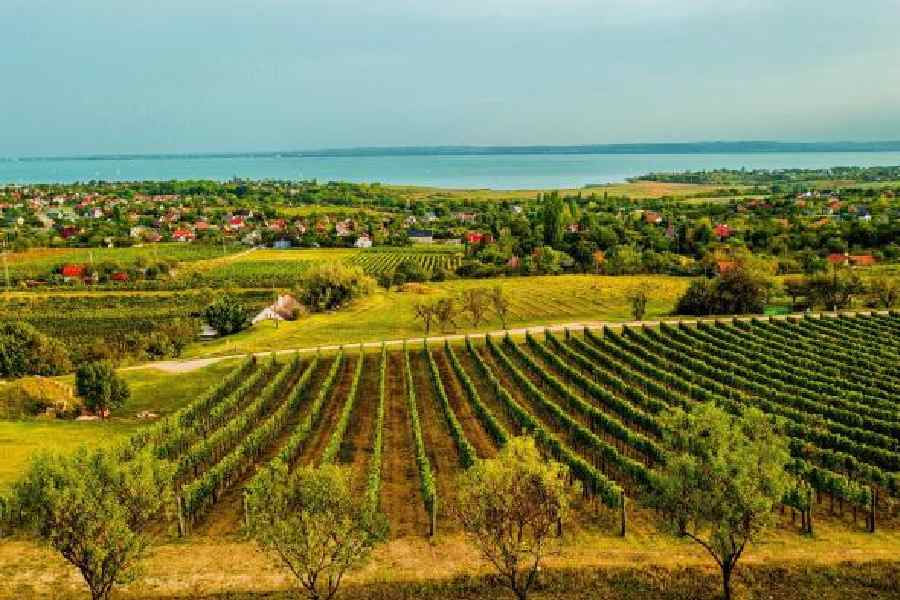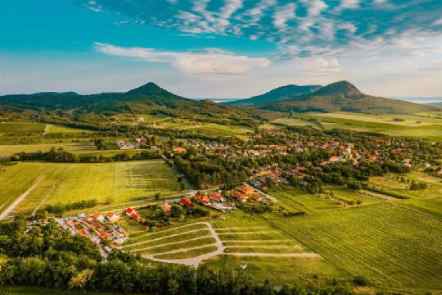Hungary is one of the most intriguing historic wine-producing countries. One of its wine regions is even a UNESCO World Heritage Site. The country is one of the oldest winemaking countries, the full potential of which is yet to be discovered. The first archaeological finds in Hungary that can be connected to grapes and wine stem are from the 1st century BC. The expansion of the Roman Empire reached the Carpathian Basin as well, and the Romans found especially favourable conditions for the further development of their wine culture in the Balaton Highlands and Szerémség regions. The first written proof of the production of Aszú wines in the Tokaj-Hegyalja region dates from the 1550s. Nowadays, the wine regions of Hungary, hugged by the mountain ranges of the Carpathian Basin, are competing with the rest of the world with their diversity and uniqueness. The country’s six popular wine regions cover 22 spots with different climatic, topographical, soil and historical characteristics. The wine bottles are usually labelled giving an indication of where the wine was made. Hungarian winemaking traditions are unique too.

BALATON: Balaton is perhaps the most complex of all Hungarian wine regions. While there are common climatic conditions, each wine has its own face and character. The six appellations around Lake Balaton form a single wine region covering a total area of more than 9,000 hectares, including Badacsony, Balatonboglár, Balaton-Highlands, BalatonfüredCsopak, Nagy-Somló and Zalai.

The environment of Lake Balaton is particularly favourable for making wines. As the largest lake in Central Europe, Lake Balaton provides plenty of reflected sunlight, adequate humidity, and cooler summers, creating a unique climate. The Balaton basin is also framed by the surrounding mountains, the Bakony in the north, sheltering from the cold winds, and the Zala and Somogy hills. The geology with volcanic, basaltic and calcareous layers — loess, brown and red forest soils, dolomite and Pannonian sands — make it perfect for producing wines of high quality.
Insider Tip: Italian Riesling is a typical variety here, but there are also other specialties such as Blue Toungue (Kéknyelvű) and Sheep’s Tail (Juhfark).

In the smaller vineyards (such as this one in Etyek, in picture), the family still harvests with invited helpers. The host, the owner, welcomes the harvesters with food and drink, and they can take home a tasting of the grapes. Larger-scale festivities and harvest parades have traditionally been held in bigger wine-growing areas, in sync with the harvest customs, which include eating and drinking, singing, dancing, parades and balls. Even today, families, relatives, friends and acquaintances share the common experience of this special holiday.

WINEMAKING TRADITIONS OF HUNGARY
Harvest traditions date back centuries. Harvest time in Hungary usually falls between September and October. After the tedious months of pruning, hoeing and tying the grape vines, winemakers can finally harvest the fruit. After the harvest begins the merrymaking, and finally, the winemaking itself. The harvest begins on a different day in each wine-growing region. In the Great Plain, it is the end of September. In the Transdanubian region, it is mainly the middle of October. In Somló and Ság Hill, it is the end of October, and in Tokaj, it is the last few days of October. Choosing the right day for the beginning of the harvest has a significant influence on the quality and the taste of the wine. The ideal time is when the grape clusters are at the peak of their development, so that they are no longer able to produce sugar. This is when you get the most amount and the best tasting wine. If the weather is favourable (warm autumn), post-ripening or even over-ripening (noble rot) is expected, which results in the grapes shrivelling up due to water loss, thus increasing their sugar content.

NUMBERS SAY IT ALL:
This year, Hungarian wines performed outstanding on international wine events and won many important prizes at renowned international competitions. Hungarian wineries got plentiful awards at this year’s Decanter World Wine Award, overall, 146:3 platinum, 11 gold, 54 silver, and 78 bronze, breaking the record of the award-winning wine numbers in Hungary. Furmint won all three platinum medals in style based on one sweet and two dry varieties. Oremus Mandolás Tokaji Furmint 2020, Tokaj-Hetszolo’s Selection 2011 both scored 97 points and Dobogó Winery’s Úrágya Furmint 2019 got 95 points, which meant gold medal for all three wines. The red wine regions did nicely on this competition as well, both Villány and Eger got 19-19 medals while Szekszárd won 15 medals.






